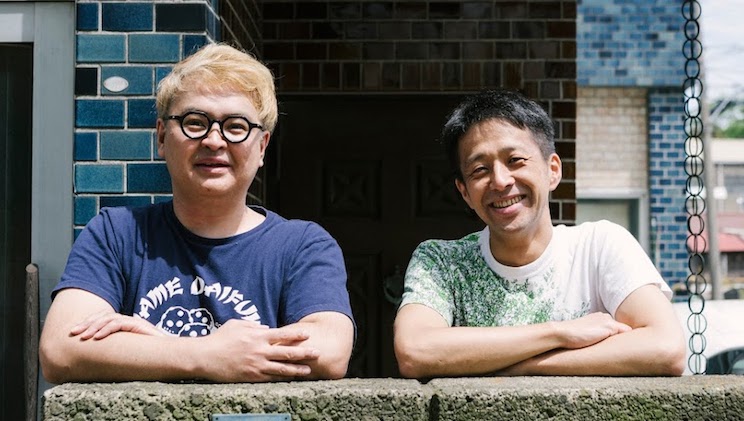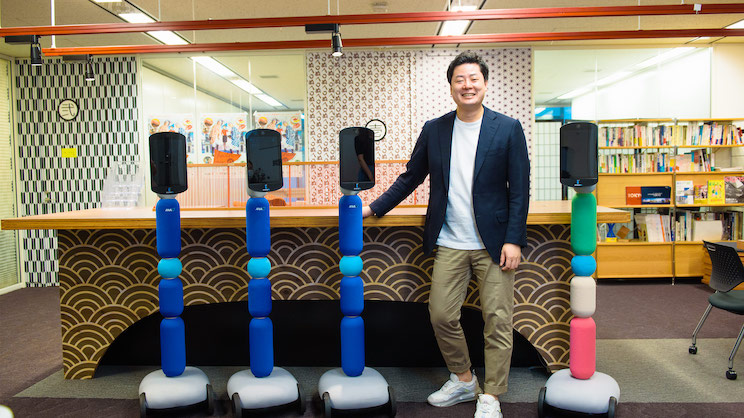Connecting People and Organizations: LINK-J, Co-Creation Drivers in the Life Sciences Industry.
Connecting People and Organizations: LINK-J, Co-Creation Drivers in the Life Sciences Industry.

Nihonbashi, a city once crowded with medical wholesalers during the Edo period (1603-1868) of Japanese history. Even now, numerous medical corporations and groups are headquartered and focused in Nihonbashi. These include LINK-J (Life Science Innovation Network Japan), a group founded to promote open innovation and generate connections within the life science industry – once a relatively closed-off world. Starting in a time when the words “open innovation” were much less known than at present, LINK-J has provided industries, groups, companies, and individuals with no prior connections a way to meet, encompassing the life science industry, other fields, academic institutions, and more. For this issue, we spoke with LINK-J member company Mitsui Fudosan Co., Ltd.’s Life Science Innovation Promotion Department’s Mr. Hiroshi Asahina and Ms. Yumi Sakai about how LINK-J formed a network that now spans over 10,000 members.
Creating new encounters that cross businesses and fields within a closed industry.
-First, please tell us about what sort of organization LINK-J is.
Mr. Hiroshi Asahina (“Asahina”): LINK-J provides “spaces and opportunities for interaction and collaboration” in order to connect people and organizations involved in life science, and is involved in a wide range of activities to promote open innovation. More specifically, the organization proves “spaces” in the form of conference rooms, communications lounges, and office areas, and also provides “opportunities for interaction” in the form of symposia and talks. Those are the two core activity types. There were around 500 events in 2019 planned and implemented as opportunities for interaction.
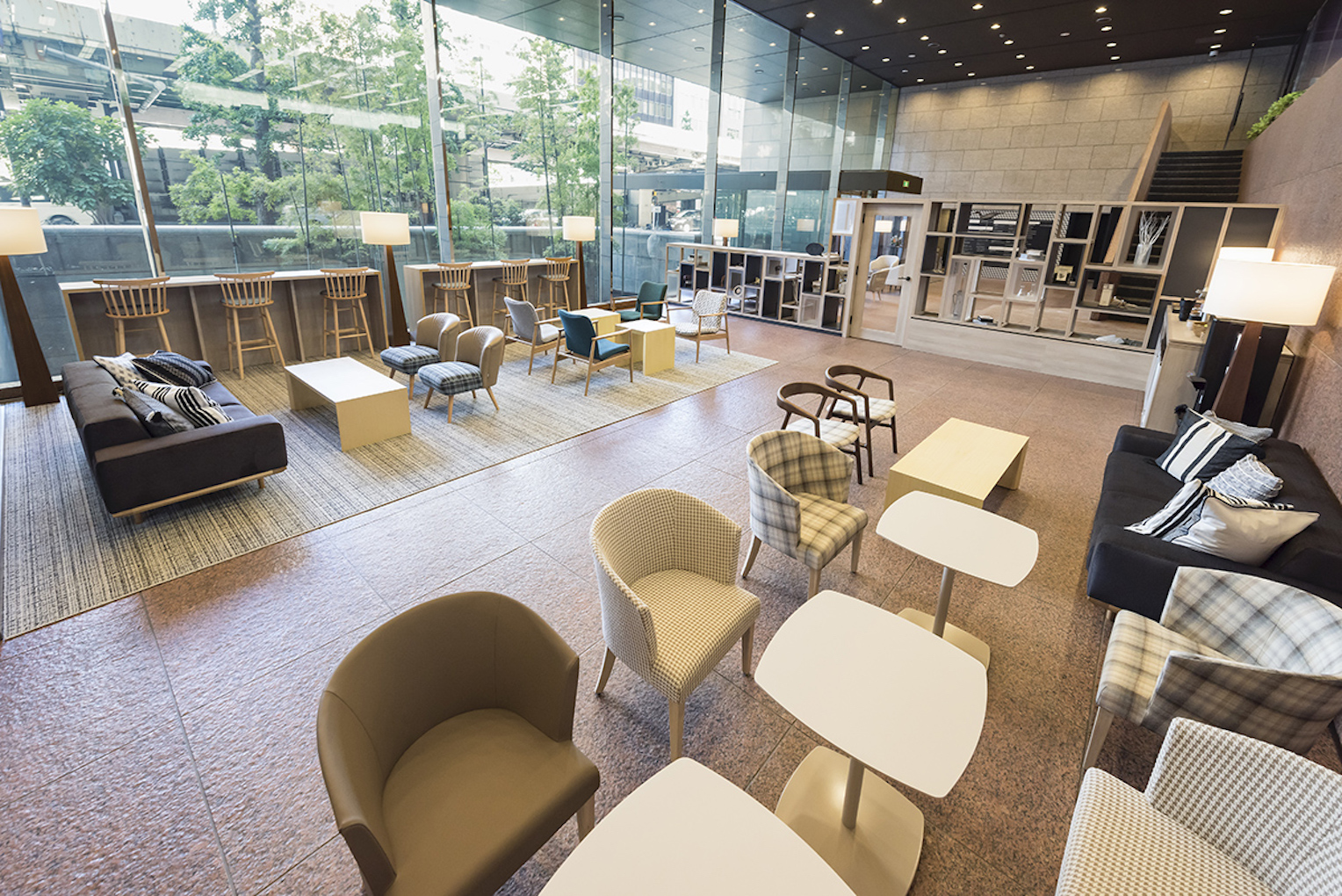
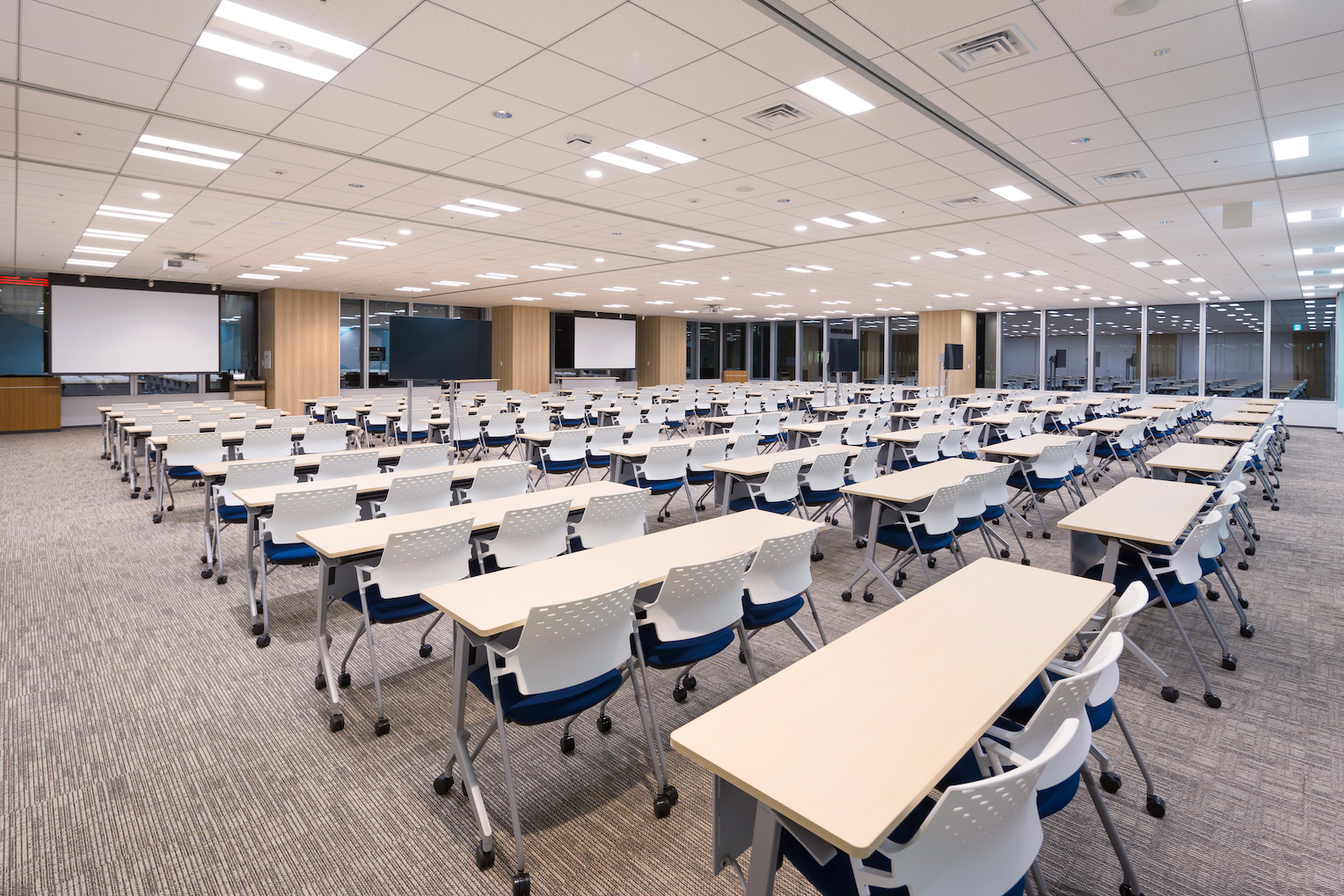
Some views of LINK-J facilities that function as spaces to generate opportunities for interaction(Image provided by LINK-J)
-What sort of background factors led to a demand for this sort of activity?
Asahina: The life science industry is quite fragmented, and each individual field of research is quite deep, forming a world unto itself. People often have no idea about the things others around them are working on even when they understand their own fields, in research and technical development with that type of extensive vertical depth. And that situation blocks interaction across fields.
On that front, we wanted to take on the challenge of providing “space and opportunities” like I mentioned earlier, as a way of promoting innovation in the industry.

Mr. Hiroshi Asahina, who has been involved with LINK-J since its launch
-You’re both employed at Mitsui Fudosan. Why did you end up taking on that challenge when working there, when the company is a real estate firm?
Asahina: I was originally a member of the department that promotes city building in Nihonbashi, as a Mitsui Fudosan employee. As I thought about ways to make Nihonbashi a more vibrant, exciting city, I remembered how many pharmaceutical-related businesses there were in the city. I thought that the city would attract even more people if it became even friendlier for people in the life science industry to work in, and launched LINK-J alongside some supporters from academia in 2016.
Next, we spoke with a lot of people in life sciences companies in order to verify what we should work on as a way to induce life science companies to bring energy to the city of Nihonbashi. We ended up learning about how the life science field is fragmented and hard to make lateral connections in as we did that, as I discussed just a bit ago. The life science industry’s latent needs also emerged along the way, specifically the need for a presence to connect companies with each other, and the industry with external government, private, and academic knowledge.

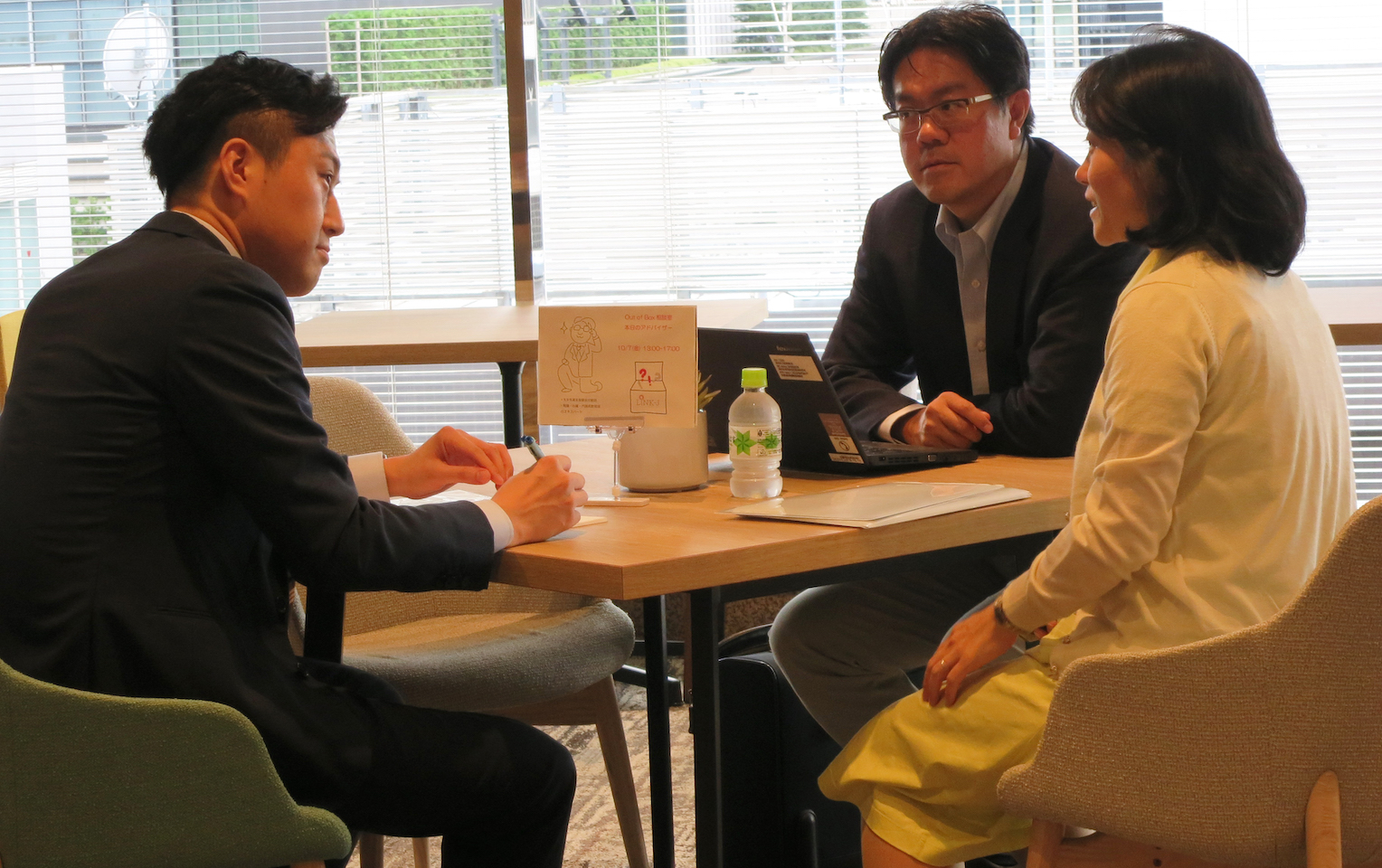
LINK-J also holds “Out of Box Consultations” with external specialists as part of its support program for practical application development on research results(Image provided by LINK-J)
-Was the lack of lateral connections a major issue for pharmaceutical companies?
Asahina: The background factor that made lateral connections a requirement involved changes to methods of drug development. The general method of formulating drugs until then involved each company independently finding substances with effects on their respective patients, and by nature, each company did research alone, internally, without any external release of information. But they say that the number of substances a company can discover on its own has been somewhat exhausted in the past few decades.
With that situation in play, a philosophy emphasizing biomedical products was born. It’s a way of thinking of organic things like cells as medicine. Biomedical products require wide-ranging advanced technology, so few companies can complete them on their own. They needed to engage in co-creation with universities, other firms, and the government. That paradigm shift caused these companies to need a chance to encounter people in other companies, industries, and fields, but the environment wasn’t suited to it given how closed-off it had been until that point.
-So are those background factors the same ones that led to the founding of LINK-J?
Asahina: Yes. Having discovered these needs, we founded LINK-J in aims of creating connections in life science and promoting open innovation.
-Is there any reason for why you picked Nihonbashi as the place for your work?
Ms. Yumi Sakai (“Sakai”): Nihonbashi is a “city of medicines,” and has been since the Edo period. Its streets were once lined with rows of medicine wholesalers, and even now it’s filled with medical companies that represent Japan globally. To put it into words clearly, it’s a place where life science knowledge gathers. Nihonbashi is also home to renowned office and commercial facilities, as well as lots of travel lodgings and restaurants. In short, I think you could say it’s the kind of city people want to gather in. I think it’s incredibly significant for us to work in a city with a history with medicine, and a city where people want to be.

Ms. Yumi Sakai, who works on public relations for LINK-J and as an MC at the organization’s events
Staying “amateur” in life science, all the way through.
-Did it take a lot of research and learning to get into the life science industry, starting from real estate? Am I right that you got involved with it as real estate pros, and are now fully life science workers?
Asahina: No, really, we’ve decided not to go all-in on learning life science, deliberately.
I’m a liberal arts type to my core and didn’t get life science initially, so I still don’t fully understand it. If I had to put it into words, I’d say I’ll always be an “amateur” in life science. But I think that stance has actually had a positive effect on the industry.
-What do you mean by a good effect, specifically?
Asahina: There are two major points – first, being able to say things that only an outsider can say, or being able to do the same sort of things. There are things that industry insiders would struggle to do or say that a third-party amateur can play the idiot and take care of, in a sense. If I say something like “couldn’t you do this if you partnered with this medical field? I don’t really know, though,” clients often respond that they were actually thinking the same thing, and it moves the conversation along. Like I was talking about earlier, it’s hard to give other fields ideas on what to do in a vertically-segmented hierarchy, even if you have those ideas. Precisely because we’re outsiders, we can fill a role giving innocent suggestions to propose open innovation.
People mention AI and medical integration a lot lately, but it turns out that the researchers who make medical advances aren’t always experts on computing. In the same was as how progress on autonomous driving picked up speed when automotive firms started talking to cutting-edge engineering companies, we probably never would have seen effort to use AI in the medical field if medical professionals hadn’t spoken with AI technicians, or vice versa. Even though you can bring medicines to market several orders of magnitude faster if you use AI to automatically calculate compounds, nobody had done it at the time.

A scene from the Industry, Academic, and Government Symposium on Regenerative Medicine (Image provided by LINK-J)
-Please tell us about the other major benefit, as well.
Asahina: The other benefit is that people accept our network precisely because it was built by a different industry. If a pharmaceutical company moved to try to build a network like LINK-J on its own, it would look like an effort to benefit themselves, and people in the industry might object to that. In turn, that would limit the companies that would participate, and the community wouldn’t grow. But those aren’t issues in our case, as a third-party real estate firm building a community. We don’t make drugs, and we’ll never compete with pharmaceutical companies. And I think that’s why our network has grown so large, and how people came to accept us.
-Did you start out planning to enter the field as an outsider?
Asahina: I did have a theory that the response would be better if we approached it as amateurs. When we met with a lot of people and explained our business before founding the organization, usually about half of those people praised the project. That moved us to jump in.
An expanding network.
-About how many individual and corporate members does the network have now?
Sakai: We have about 10,000 active members who read the email newsletter. That includes about 2,000 individuals called LINK-J Special Members, on an individual basis, and about 300 companies on a company basis. Increasing the circulation list for our email newsletter also increases opportunities for new encounters, so we consider it to be extremely important.

A “Networking Night” interactive event (Image provided by LINK-J)
-What sort of methods did you use to grow the network, specifically?
Sakai: The core was the basic work of growing our email list by asking event participants for their email addresses for reminders about the next event, each time. Like Mr. Asahina talked about initially, we hold as many as 500 events each year. They’re interactive events, with timely themes involving lectures by prominent researchers, panel discussions, short presentations by startups, and other topics selected by members. We’ve moved to online events recently, given the impact of the spread of the coronavirus, and are handling themes like providing information on PCR testing, and ways for startups to survive in the post-corona world. We announce online events several days in advance, and have even gotten more than 1,000 viewers for some.
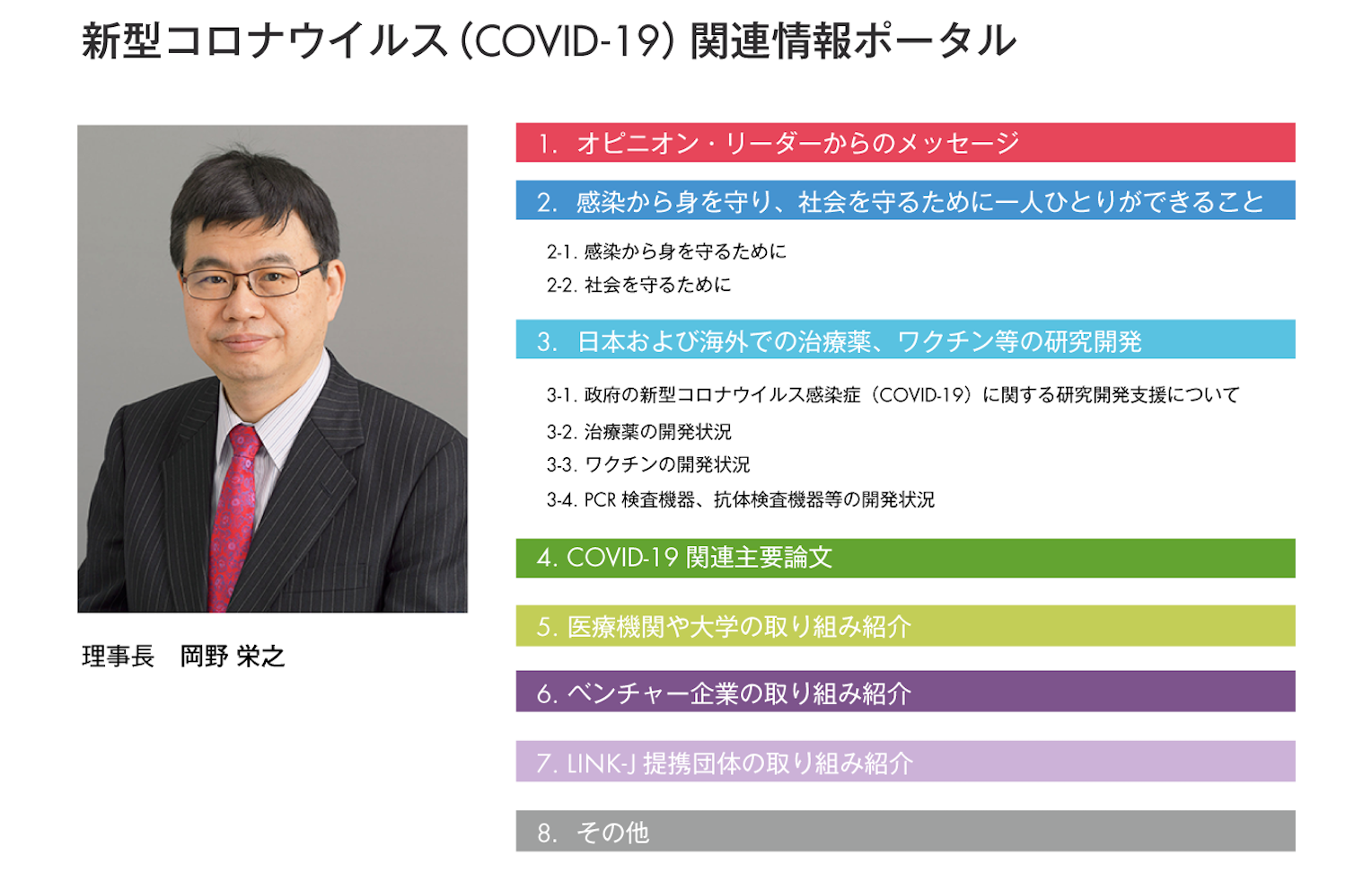
The LINK-J official website even features a special “COVID-19 portal site” at present(Image provided by LINK-J)
-Drawing 1,000 people with a last-minute notice is impressive, isn’t it?
Sakai: Since our seminars so far had only drawn a maximum of 500 attendees, it was quite surprising for me, especially with our latest online events being free and open to anyone. It’s partly thanks to the network we’ve built up with our members so far, but it shows that you can draw a large crowd online even with short notice. I feel like that project really made the strengths of digital media visible for us.
On the other hand, it makes it hard to appeal to the senses, naturally, and it’s hard to eliminate the sense of distance from the other people involved. I get a sense that it’s hard to take the final step toward building a relationship with another person you want to work with when it’s not face-to-face. So I’d like to focus on how to link this to real space creation as a future issue, while keeping the benefits of digital technology fully in view.

An online event held in April 2020 (Image provided by LINK-J)
-Why do you think the network has grown to this size over the four years since it launched?
Asahina: As you might expect, I feel that the latent need for a community network among people in the life science field was a big factor, like I mentioned earlier. We addressed that need precisely, and people with a latent sympathy for the idea and desire for connections participated. LINK-J is a need-driven project.
-So you’d say that your accurate understanding of those needs tied into your current boom?
Asahina: Really, that’s the key point. It would be accurate to say that we didn’t intend to build a community; we simply built one because that’s what people wanted. That’s a very important point, and communities that are pushed onto people don’t tend to go well. People were satisfied with the idea because it was an idea for building a network that addressed their needs, in a city that has always been a hub for pharmaceuticals - Nihonbashi. I think that the get reaction to that was important.
Investing in stronger connections and business for progress.
-Would you mind sharing any future projects you would like to work on?
Asahina: We think of ourselves as having three key traits required for business growth: “space,” “connections,” and “money.”
The first is space. It’s something I’ve always been working on even before founding LINK-J, so I’m confident that I’ve done what could be done there. So I feel that I need to focus on “stronger connections” and “money” in the future.
In regard to stronger connections, I was to hold lectures and develop a situation where relationships develop from simple acquaintance to the next stage, between people and organizations who meet at our events. We can do that because we’re now providing a lot of opportunities for people to encounter each other. In other words, business matching. I think broadly, it splits into technical, business, and personnel matching. It’s all in the conceptual stage right now since any of those would be a leap into a new specialty field, but I’d like to make it happen, even if we need to partner with an organization that excels at this sort of matching.
-Can we also ask about the remaining trait – money?
Asahina: Yes. Even great ideas can’t be achieved without capital. And as a field, life science research and development required particularly major upfront investment. So I think it’s quite important to create a mechanism that circulates enough capital for research, while involving a lot of different people. I can also envision an approach via connecting corporate investors with companies that need capital, via creation of lateral connections. We’re also happy when we find a suitable partner for someone in an investment sense, so please feel free to let us know if that’s what you’re interested in.
Interview and text: Ichiro Yasui (Konel) Photo:Daisuke Okamura
LINK-J
Life Science Innovation Network Japan
A business creation platform for life science, with four functions in the form of “coming together, connecting, growing, and taking flight.” Drawing together people involved in life science and presenting opportunities for interaction and collaboration to connect them, or fostering ideas and innovations that come from these opportunities, the organization works to generate new life science business unlike anything seen before via diverse opportunities – ensuring the growth and support for new ideas to take flight.
